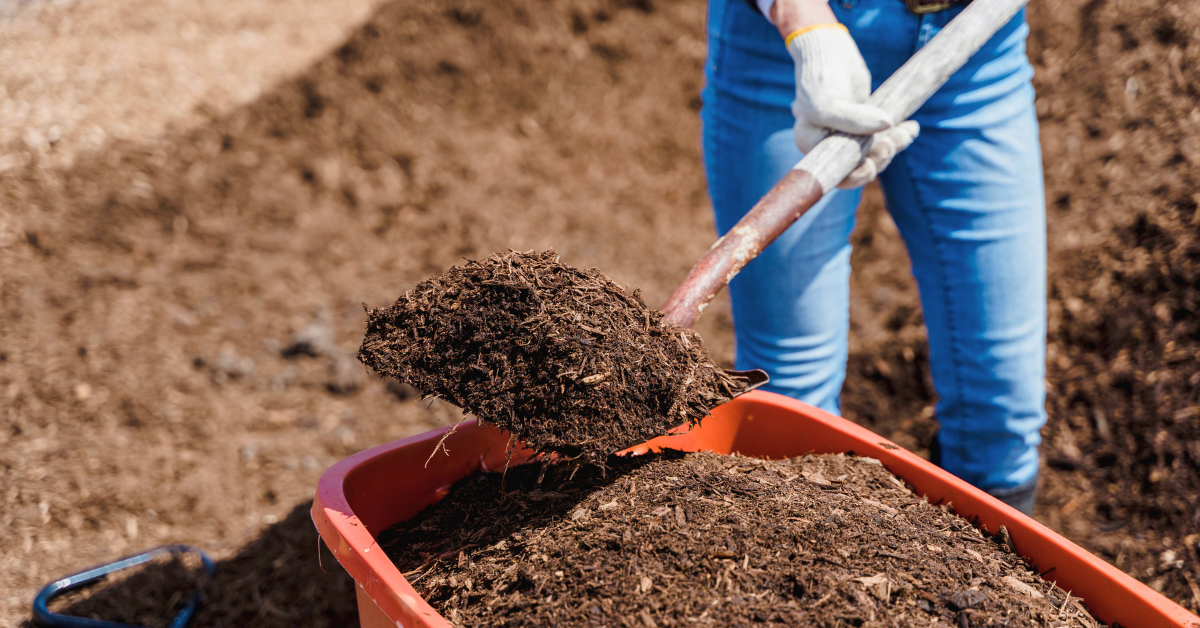The chill of winter is fading. Leaves are showing up on the trees. Bees are happily buzzing from one flower to the next. Spring is surely here, bringing with it endless possibilities for landscaping. This landscaping sets the stage for a vibrant yard that will remain so all season long, so it’s important to do it right. That’s why mulch landscaping is so important. But it’s more complex than buying a few bags of the first mulch you see and scattering it around your garden. To get the most out of your garden beds, flower borders, and trees, you have to know what mulch to use, how much to lay, how to prep your landscape, and the proper maintenance steps. Let’s get our hands dirty.
Why Mulch Landscaping Matters in Spring
Spring is the best time to mulch, particularly before the full swing of growing season kicks into gear. But why is this such a vital step?
- Moisture Retention: Temperatures are on the rise during this time of year, meaning the need to retain moisture is becoming more important. When you use mulch, its moisture retention qualities minimize the frequency at which you need to water your plants.
- Weed Suppression: Let the weeds know they’re not welcome! When you lay down a layer of mulch, you’re blocking sunlight from reaching those budding, unwelcome plants.
- Soil Temperature Regulation: Mulch is essentially the insulation of your garden. It keeps soil warm during cool times and cool during warm times, which creates a nice stable environment in which your plants can take root.
Choosing the Best Mulch for Landscaping
The spectrum of mulch quality is a vast one, so it’s important to know your stuff when choosing the best mulch for landscaping. This is done through considerations for both plant needs and your personal aesthetic preferences. Let’s determine the ideal choice:
Organic and Inorganic Mulch
Shredded bark, wood chips, and compost are all examples of organic mulch. They break down over time and enrich the soil with vital nutrients. On the flip side, you could opt for inorganic mulch—rubber, stone, and landscape fabric. This type doesn’t decompose, making it much more suitable for long-term use in locations where plant growth isn’t a priority.
Best Mulch Types by Area
- Flower Beds: Shredded hardwood or bark mulch provides a nice, neat appearance with a slow decomposition process.
- Vegetable Gardens: Composted leaves or straw do a great job of providing soil enrichment while protecting fragile or tender plants.
- Around Trees: Bark nuggets and wood chips help regulate moisture and enrich the soil. Just don’t tell the trees that the mulch is made of their kind …
Mulch Colors
If you want to achieve a unique look, colored mulch could be a great solution! At RELS Landscaping, we offer various mulch colors that can give your garden a wonderfully special aesthetic.
How Much Mulch Is Enough?
While an ultra-thin layer of mulch isn’t going to do you much good, it’s easy to overdo it. Avoid being stingy or overzealous and you’ll find the sweet spot!
- Recommended Depth: If your mulch layer is 2–3 inches in depth, you’re doing it right! This is enough mulch to protect your plants and keep them at the proper temperature without suffocating them.
- Avoiding Mulch Overload: Give your plant bases some breathing room by keeping the mulch a few inches away from them. A high pile of mulch that’s flush up against a plant base could lead to moisture buildup, root rot, and various pest issues.
Prepping Your Landscape Before Mulching
A little preparation can go a long way when you’re getting ready to mulch, so let’s go over a few steps for preparing your landscaping areas for fresh new mulch. First off, you’ll want to clear any existing debris—weeds, dead leaves, and any other stuff winter has left behind on your property. Once that’s done, define the edges of your flower beds, vegetable gardens, and tree patches with a trimmer. Edging will help keep things clean by preventing soil from spilling over into your yard.
We mentioned earlier that mulch has great moisture retention properties, so why not give the soil some hydration before mulch landscaping? Hydrating the soil means plants have access to vital nutrients right away!
Maintenance Tips for Mulched Areas
Once you’ve laid your mulch, there are still a couple things you can do to maintain the area:
- Fluff Mid-Season: Gently turn or rake the mulch to help it avoid becoming compacted. The looser it is, the better the airflow!
- Top Off as Needed: If your mulch has broken down or been washed away during heavy rain, it’s a good idea to top it off and keep it at an ideal level.
- Watch for Issues: It’s best to catch issues with mold, pests, or mildew early on, so keep an eye out for them and address them as they pop up.
Ready to Achieve Peak Mulch Landscaping?
More than simply a visual upgrade for your garden, spring mulching is a vital step in your landscaping process. That’s why it’s so important to make all the right mulching choices and keep the area clean and healthy. If you’re looking for a place to get only the best supplies for mulch landscaping, look no further than RELS Landscaping. We’re just as excited for the warm weather as you, and we want to make sure you have a healthy garden. Get in touch and tell your garden we said hi!

